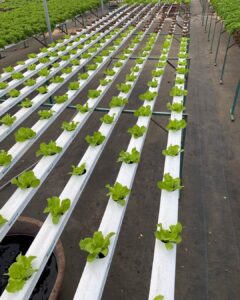Welcome to the world of hydroponics, where gardening goes beyond soil and takes a leap into innovation and efficiency. In this blog, we will dive into the fascinating realm of “A to Z Hydroponics,” where every step from start to finish is covered.
This will ensure you have all the knowledge you need to cultivate thriving plants without the need for traditional soil-based methods.
Whether you’re a seasoned gardener or a curious beginner, this blog will be your go-to resource for everything hydroponics.
From understanding the fundamental principles to exploring the latest advancements, we’ve got you covered. So, join us as we unravel the mysteries of this revolutionary technique, providing you with insights, tips, and tricks to embark on your hydroponic journey. Get ready to witness the future of gardening, from A to Z.
History of Hydroponics
Have you ever heard of hydroponics? It’s an innovative way of growing plants without soil. Instead, plants are grown in a nutrient-rich water solution, often in a controlled environment. Hydroponics is not a new concept, but it has gained popularity in recent years as more people are interested in sustainable and efficient methods of gardening.
Hydroponics has its roots in ancient times, with early civilizations such as the Babylonians and Aztecs using similar techniques to grow crops in water. However, it wasn’t until the 20th century that hydroponics gained traction as a legitimate alternative to traditional soil-based gardening. In fact, NASA even used hydroponics to grow food in space during the 1990s!
Hydroponics has its roots in ancient civilizations such as the Aztecs, who used a method called chinampas to grow crops in shallow lake beds. The first modern hydroponic system was developed in the 1930s by Dr. William F. Gericke, a professor at the University of California, Berkeley. Since then, hydroponics has evolved and become more sophisticated, allowing for higher yields and more diverse crops.
One of the main advantages of hydroponics is that it allows for greater control over the growing environment, resulting in healthier and more productive plants. Additionally, hydroponics uses significantly less water than traditional gardening methods and can be done in smaller spaces, making it an ideal option for urban farming.
Of course, like any method of gardening, hydroponics has its drawbacks as well. One of the biggest challenges is maintaining the proper nutrient balance in the water solution, as an imbalance can lead to stunted growth or even death of the plants. Hydroponics systems also require a significant upfront investment in equipment and materials, which may not be feasible for everyone.
Despite these challenges, many people are turning to hydroponics as a way to grow their fresh produce at home, year-round. With the ability to grow crops faster and more efficiently than traditional soil-based gardening, hydroponics is quickly becoming a popular option for both hobbyists and commercial growers alike.
So why choose hydroponics over traditional soil-based gardening? The answer is simple: hydroponics offers greater control, efficiency, and sustainability than traditional methods, making it an ideal option for anyone looking to cultivate fresh produce in a more modern and innovative way.
Types of Hydroponic Systems
Now that we’ve covered the basics of hydroponics and its advantages, let’s dive into the different types of hydroponic systems.
Each system has its unique advantages and disadvantages, so it’s important to choose the right one based on your specific needs and goals.
Deep Water Culture (DWC)
DWC is one of the simplest and most popular hydroponic systems. In this system, plants are suspended above a reservoir of nutrient-rich water, with their roots submerged in the water.
Oxygen is supplied to the roots via an air pump, which helps to prevent root rot and promote healthy growth. DWC is an excellent choice for beginners, as it requires very little maintenance and is highly effective for growing plants such as lettuce and herbs.
Ebb and Flow
The ebb and flow system, also known as flood and drain, involves flooding the growing area with nutrient-rich water for a set period before draining it back into a reservoir.
This cycle is repeated multiple times a day, providing plants with the necessary nutrients and oxygen while also preventing the buildup of harmful pathogens.
Ebb and flow systems are highly versatile and can be used for a wide variety of crops, making them a popular choice for commercial growers.
Drip Irrigation
Drip irrigation is a popular hydroponic system for growing larger plants such as tomatoes and peppers. In this system, a drip line is used to deliver nutrient-rich water directly to the plant’s root systems, providing them with a consistent supply of water and nutrients. Drip irrigation systems are highly efficient and can save water compared to traditional gardening methods.
Nutrient Film Technique (NFT)
NFT is a popular hydroponic system for growing leafy greens such as lettuce and spinach. In this system, a thin film of nutrient-rich water is continuously circulated over the roots of the plants, providing them with the necessary nutrients and oxygen.
NFT systems are highly efficient and require very little water, making them an ideal choice for those looking to conserve resources.
Aeroponics
Aeroponics is a highly innovative hydroponic system that involves suspending plants in the air and misting their roots with nutrient-rich water.
This method allows for optimal oxygenation of the roots, which promotes faster growth and healthier plants.
Aeroponics systems are highly efficient and can produce larger yields than other hydroponic systems, making them an ideal choice for commercial growers.
Wick System
The Wick system is one of the simplest and most affordable hydroponic systems. In this system, a wick is used to transport nutrient-rich water from a reservoir to the plant’s root systems.
While wick systems are easy to set up and require very little maintenance, they may not be suitable for larger plants or those with high nutrient requirements.
Each hydroponic system has its unique advantages and disadvantages, making it important to choose the right one based on your specific needs and goals.
Whether you’re a beginner looking to start a small garden or a commercial grower seeking to maximize yields, there’s a hydroponic system out there that’s perfect for you.
Components of a Hydroponic System
Now that we’ve covered some of the different types of hydroponic systems, let’s take a closer look at some of the key components that are essential for any hydroponic setup.
Grow Trays
Grow trays are an essential component of any hydroponic system, as they provide a stable platform for the plants to grow on.
These trays can be made from a variety of materials, such as plastic or metal, and are available in a range of sizes to accommodate different plant types and growth stages.
Nutrient Reservoirs
Nutrient reservoirs are used to store the nutrient-rich water solution that is used to feed the plants. These reservoirs can be made from a variety of materials, such as plastic or glass, and come in a range of sizes to accommodate different hydroponic setups.
Pumps and Tubing
Pumps and tubing are used to circulate the nutrient-rich water solution through the hydroponic system. The pump is used to move the water from the reservoir to the grow trays or channels, while the tubing is used to deliver the water to the plants.
Growing Medium
The growing medium is used to anchor the plants in place and provide a stable base for their roots to grow in. Some common types of growing medium include perlite, coconut coir, and Rockwool, although there are many other options available.
pH and EC Meters
Maintaining the proper pH and nutrient levels in the water solution is essential for the health and growth of the plants.
pH and EC meters are used to monitor the acidity and nutrient levels of the water solution, allowing growers to adjust the levels as needed to ensure optimal plant growth.
Lighting Systems
Finally, lighting systems are an important component of any hydroponic setup, as they provide the plants with the light they need to grow and thrive.
LED lights are a popular choice for hydroponic setups, as they are energy-efficient and produce minimal heat, making them ideal for indoor growing environments.
Choosing the right hydroponic system for your needs
Choosing the right hydroponic system for your needs can seem like a daunting task, especially if you’re new to the world of hydroponics.
There are many different factors to consider, including the size of your growing space, the types of plants you want to grow, and your budget.
One of the first things to consider is the size of your growing space. If you have a small space, such as a balcony or a spare room, a compact system like a DWC or NFT setup may be the best option. These systems take up very little space and can be easily scaled up or down to meet your needs.
On the other hand, if you have a larger space, such as a greenhouse or a dedicated grow room, a more complex system like an ebb and flow or drip irrigation setup may be more suitable. These systems can accommodate larger plants and offer more flexibility in terms of plant spacing and layout.
Another factor to consider is the types of plants you want to grow. Some plants, such as lettuce and herbs, thrive in compact, low-maintenance systems like DWC or NFT setups.
Other plants, such as tomatoes and peppers, require more space and support and may do better in systems like ebb and flow or drip irrigation setups.
Finally, budget is an important consideration when choosing a hydroponic system. While some systems, like DWC and NFT setups, can be relatively inexpensive to set up, others, like ebb and flow or drip irrigation setups, can be more costly due to the additional equipment and components required.
Ultimately, the right hydroponic system for you will depend on a variety of factors, including the size of your growing space, the types of plants you want to grow, and your budget.
By taking the time to research and consider these factors, you can choose a system that is well-suited to your needs and will provide you with a bountiful harvest of fresh, healthy produce.
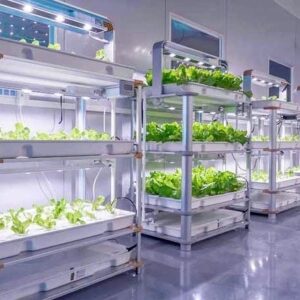
DIY vs. Pre-built Systems
When it comes to setting up a hydroponic system, one of the decisions you’ll need to make is whether to build your DIY system or invest in a pre-built system. Both options have their pros and cons, so it’s important to weigh them carefully before making a decision.
One of the main advantages of building your DIY hydroponic system is that it can be more affordable than buying a pre-built system. DIY systems can be made from a variety of materials, such as PVC pipe or recycled materials, which can help keep costs low.
Additionally, building your system allows you to customize it to your specific needs and preferences. You can choose the size, layout, and components that work best for you, and make adjustments as needed over time.
On the other hand, pre-built hydroponic systems are designed to be plug-and-play, which can make them a good choice for beginners or those who are short on time.
These systems often come with everything you need to get started, including grow trays, nutrient reservoirs, pumps, and lighting systems.
Pre-built systems also tend to be more reliable and efficient than DIY systems, as they are designed and tested by professionals. This can help ensure that your plants are getting the proper nutrients, water, and light they need to grow and thrive.
Ultimately, the decision between DIY vs. pre-built systems will depend on your specific needs, preferences, and budget. If you’re handy and enjoy DIY projects, building your system can be a fun and rewarding experience.
If you’re new to hydroponics or don’t have the time or skills to build your system, investing in a pre-built system can be a good option. Either way, with the right system and a little know-how, you can enjoy a bountiful harvest of fresh, healthy produce grown right in your own home.
Choosing the Right Plants for Hydroponics
When it comes to choosing the right plants for hydroponics, there is a wide range of options to choose from. Here are some of the most popular types of plants for hydroponic growing:
Leafy Greens and Herbs
Leafy greens and herbs are some of the easiest and most popular plants to grow in a hydroponic system. These plants tend to have shallow roots and don’t require as much space as larger plants, making them ideal for smaller hydroponic setups.
Fruiting Plants Like Tomatoes and Cucumbers
Fruiting plants like tomatoes and cucumbers can also be grown successfully in a hydroponic system. These plants require more space and support than leafy greens and herbs but can produce a bountiful harvest when grown in the right conditions.
Root Vegetables Like Carrots and Radishes
Root vegetables like carrots and radishes can also be grown in a hydroponic system, although they require a deeper growing medium than other types of plants. Carrots, in particular, can be challenging to grow in hydroponics due to their long growing time and sensitive root systems.
Flowers and Ornamental Plants
In addition to food crops, many gardeners also use hydroponics to grow flowers and ornamental plants. These plants can add a beautiful touch to any indoor or outdoor space and can be grown year-round in a hydroponic system.
When it comes to seed selection and starting, it’s important to choose high-quality seeds from a reputable source. Look for seeds that are specifically labeled as suitable for hydroponic growing, as these will often have different requirements than traditional soil-based crops.
To start your seeds, you can use a seed starting tray or simply sow them directly into your hydroponic system. Be sure to follow the recommended planting depth and spacing for your chosen plant type, and keep a close eye on the seedlings as they grow to ensure they are getting the right amount of light and nutrients.
By choosing the right plants and following best practices for seed selection and starting, you can set yourself up for success in hydroponic growing and enjoy a bountiful harvest of fresh, healthy produce.
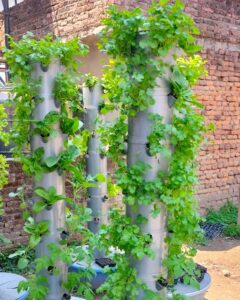
Nutrient Management
Nutrient management is a critical aspect of successful hydroponic gardening. Unlike traditional soil-based gardening, hydroponic plants rely on a nutrient-rich solution to grow and thrive. Here are some key factors to consider when managing nutrients in your hydroponic system:
Understanding the Essential Nutrients for Plant Growth
There are several essential nutrients that plants need to grow and thrive, including nitrogen, phosphorus, potassium, calcium, magnesium, and sulfur.
These nutrients can be found in commercially available hydroponic nutrient solutions, or you can mix your solution using individual nutrient salts. Check out how to clean salt buildup in hydroponics.
pH Management and Monitoring
The pH level of your nutrient solution can have a big impact on plant growth and nutrient uptake. Most plants prefer a slightly acidic pH range between 5.5 and 6.5, although some may have more specific requirements.
It’s important to regularly monitor the pH of your nutrient solution using a pH meter or test kit, and adjust as needed using pH-up or pH-down solutions.
Common Nutrient Deficiencies and How to Diagnose and Treat Them
Even with careful nutrient management, plants can develop nutrient deficiencies if they are not getting the right balance of nutrients.
Common deficiencies include yellowing leaves (indicating a nitrogen deficiency), purple or red leaves (indicating a phosphorus deficiency), and stunted growth (indicating a potassium deficiency).
If you notice any of these symptoms, it’s important to diagnose the issue and adjust your nutrient solution accordingly.
Best Practices for Nutrient Solution Preparation and Management
To prepare your nutrient solution, follow the manufacturer’s instructions or mix your solution using individual nutrient salts.
It’s important to use high-quality water that is low in dissolved solids and free of contaminants, as these can interfere with nutrient uptake.
You should also regularly monitor and adjust the nutrient solution as needed to maintain the correct nutrient balance.
Lighting for Hydroponics
In hydroponic growing, proper lighting is crucial for the success of your plants. Here are some important things to keep in mind when it comes to lighting in hydroponics:
Types of Grow Lights
There are several types of grow lights that are commonly used in hydroponic systems, including LED, HID, and fluorescent lights. LED lights are becoming increasingly popular due to their energy efficiency, long lifespan, and ability to emit specific light spectrums tailored to plant growth.
Light Spectrum and Its Effects on Plant Growth
Different wavelengths of light have different effects on plant growth and development. Red and blue light is the most important for photosynthesis, while green light is less important. However, green light can help plants grow stronger stems and leaves.
Understanding PAR and PPFD
PAR (Photosynthetically Active Radiation) and PPFD (Photosynthetic Photon Flux Density) are two important metrics used to measure the amount and intensity of light that your plants receive.
PAR refers to the wavelengths of light that are most important for photosynthesis, while PPFD measures the number of photons that reach a given area of your plant canopy.
Light Timing and Duration
The timing and duration of light exposure can also have a significant impact on plant growth. Most plants require at least 12-16 hours of light per day to grow properly, and some may require more depending on the specific species and growth stage.
When setting up your hydroponic lighting system, it’s important to choose the right type of light, understand the optimal light spectrum and intensity for your plants, and carefully manage the timing and duration of light exposure. By doing so, you can help ensure that your plants receive the light they need to thrive and produce a bountiful harvest.
By understanding the different types of grow lights, the importance of the light spectrum, and the metrics used to measure light intensity, you can select the right lighting setup for your hydroponic garden. With proper timing and duration, your plants can thrive and produce a bountiful harvest of healthy, delicious crops.
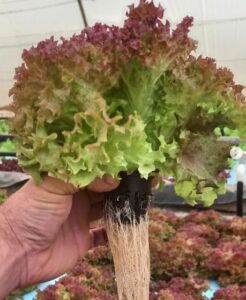
Troubleshooting Common Hydroponic Problems
As with any type of gardening, hydroponics can be prone to a variety of problems that can impact plant growth and health. Here are some common issues that hydroponic growers may encounter, and tips for troubleshooting them:
Root Rot and Other Plant Diseases
One of the most common problems in hydroponic growing is root rot, which is caused by fungal or bacterial infections that can spread quickly in the warm, moist environment of a hydroponic system.
To prevent root rot, make sure to maintain proper oxygen levels in your nutrient solution, avoid overwatering your plants, and use a good-quality hydroponic nutrient solution that is free of contaminants.
Algae and Pest Control
Algae growth is another common problem in hydroponic systems, as it can quickly take over and suffocate your plants. To prevent algae growth, keep your nutrient solution covered and out of direct sunlight, and use a nutrient solution that is properly balanced to prevent excess nutrients that can feed algae growth.
In addition, pest infestations such as spider mites or aphids can also be a problem in hydroponics. To prevent these pests, make sure to properly sterilize your equipment and use natural pest control methods such as introducing beneficial insects.
pH and Nutrient Imbalances
Maintaining the proper pH and nutrient balance in your hydroponic system is crucial for healthy plant growth. If your pH is too high or too low, your plants may not be able to absorb the nutrients they need, which can lead to stunted growth or even death.
To prevent pH imbalances, make sure to test your pH regularly and adjust it as needed using a pH adjuster solution. In addition, keeping track of nutrient levels in your solution and ensuring that they are properly balanced is also key to preventing nutrient imbalances.
Water Temperature and Oxygenation
The temperature of your nutrient solution can also have a significant impact on plant growth, as water that is too warm can promote the growth of harmful bacteria and algae.
To prevent this, keep your nutrient solution at a temperature between 65-75°F (18-24°C), and use a water chiller if necessary to maintain the proper temperature.
In addition, maintaining proper oxygenation levels in your nutrient solution is also important for healthy plant growth, as it ensures that your plants are receiving the oxygen they need to thrive.
By being vigilant and taking the necessary steps to prevent and troubleshoot common problems in hydroponics, you can ensure that your plants are healthy and thriving, and enjoy a bountiful harvest of delicious, home-grown crops.
Tips for Maximizing Hydroponic Yield and Quality
o get the most out of your hydroponic garden, it’s important to pay attention to a few key factors that can help maximize yield and quality. Here are some tips to consider:
Plant Training and Pruning
Training and pruning your plants is an essential part of maximizing your hydroponic yield. By removing excess foliage and encouraging your plants to grow in a certain direction, you can help to increase light penetration and airflow, which can improve plant health and productivity.
Some common techniques for plant training and pruning include topping, trimming, and using trellises or stakes to support your plants as they grow.
Temperature and Humidity Control
Maintaining the proper temperature and humidity levels in your hydroponic system is also key to maximizing yield and quality. Ideally, your grow room should be kept at a temperature between 70-75°F (21-24°C) and a humidity level between 50-70%.
By keeping these conditions stable and consistent, you can help to ensure that your plants are healthy and productive throughout their growth cycle.
CO2 Supplementation
Adding CO2 to your hydroponic system can also help to boost plant growth and yield. By supplementing your system with additional CO2, you can increase photosynthesis rates and stimulate plant growth, which can result in bigger, healthier plants and a higher overall yield.
Harvesting and Post-Harvest Handling
When it’s time to harvest your crops, it’s important to handle them with care to ensure the best possible quality.
This includes harvesting at the proper time, handling your plants gently to avoid damage, and properly curing and storing your crops to preserve flavor and freshness.
By paying attention to these key factors and implementing best practices in your hydroponic garden, you can help to maximize yield and quality and enjoy a successful and bountiful harvest.
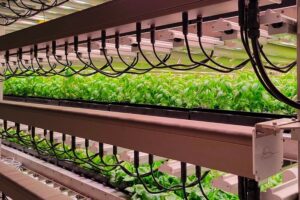
Getting Started with Hydroponics
Hydroponic gardening can be a rewarding and efficient way to grow your fresh produce or ornamental plants. If you’re new to hydroponics, here are some steps to help you get started:
Steps for Setting up a Hydroponic System
- Choose the type of hydroponic system that works best for your needs and budget.
- Set up your grow trays and nutrient reservoirs, making sure to level them and secure them in place.
- Install your lighting system, making sure to position the lights at the appropriate distance from your plants.
- Add your growing medium to your grow trays and plant your seeds or transplants.
- Connect your pumps and tubing to circulate your nutrient solution through your system.
- Test and adjust your pH and nutrient levels as needed.
Required Materials and Tools
The materials and tools you’ll need will depend on the type of hydroponic system you choose, but some common items include:
- Grow trays and nutrient reservoirs
- Lighting system
- Pumps and tubing
- Growing medium (such as coconut coir, perlite, or Rockwool)
- Nutrient solution
- pH and EC meters
- Seeds or transplants
- Hand tools (such as a drill, screwdriver, and pliers)
Best Practices for Starting Seeds and Transplants
Starting seeds and transplants in a hydroponic system is a bit different than in traditional soil-based gardening. Here are some best practices to keep in mind:
- Use a high-quality seed-starting mix or rock wool cubes to give your seeds the best chance of germinating.
- Keep your seeds or transplants moist but not waterlogged.
- Provide plenty of light to encourage healthy growth.
- Once your plants have developed a few true leaves, you can start adding nutrient solutions to your system.
By following these steps and best practices, you can set up a successful hydroponic system and enjoy the benefits of fresh, homegrown produce or ornamental plants.
Sizing and scaling considerations
When it comes to hydroponics, sizing, and scaling considerations are crucial for ensuring the success and efficiency of your system. Here are some important factors to consider:
- Available Space: Determine the amount of space you have for your hydroponic setup. This will dictate the size and number of hydroponic units or systems you can accommodate. Consider vertical space as well, especially if you plan to use vertical farming techniques.
- Crop Selection: Different crops have varying space and nutrient requirements. Consider the size and growth habits of the plants you intend to grow when determining the scale of your hydroponic system. Leafy greens, for example, require less space compared to large fruiting plants like tomatoes or cucumbers.
- Nutrient Solution Management: Scaling up a hydroponic system affects nutrient solution management. Ensure that your nutrient solution reservoir is appropriately sized to meet the demands of your plants. Larger systems may require more frequent monitoring and adjustment of nutrient levels to maintain optimal plant health.
- Water and Oxygen Delivery: As you scale up your hydroponic system, ensure adequate water and oxygen delivery to the plants’ roots. This may involve increasing the number or capacity of pumps, air stones, or other aeration devices. Proper oxygenation is critical for healthy root growth and nutrient uptake.
- Lighting Considerations: If you are using artificial lighting in your hydroponic system, consider the coverage area and intensity of the lights. As you scale up, you may need to add more lights or upgrade to higher wattage models to provide sufficient light to all your plants.
- Automation and Monitoring: Scaling up your hydroponic system may require additional automation and monitoring equipment. This can include timers, sensors, and controllers to manage lighting, irrigation, nutrient delivery, and environmental conditions. These tools help optimize efficiency and reduce manual labor as your system grows.
- Staffing and Maintenance: Consider the resources required to manage a larger hydroponic system. Determine if you have the necessary personnel to handle the increased workload, including routine maintenance, pest control, and harvesting.
- Cost Considerations: Scaling up a hydroponic system involves additional costs, such as equipment, infrastructure, utilities, and supplies. Assess your budget and calculate the return on investment (ROI) to ensure the scalability aligns with your financial goals.
Remember to start small and gradually expand your hydroponic system as you gain experience and confidence. Each system is unique, so adapt these considerations to your specific needs and objectives.
The Future of Hydroponics
As the world’s population continues to grow and resources become scarcer, hydroponic gardening is becoming an increasingly popular solution for sustainable food production. The future of hydroponics looks bright, with many exciting advancements and innovations on the horizon.
One area where we can expect to see significant growth in hydroponics is urban agriculture. With more and more people moving into cities, there is a growing demand for locally-grown produce. Hydroponic systems can be set up in small spaces, making them an ideal solution for urban gardening.
Another trend we’re seeing in hydroponics is the use of automation and smart technology. From sensors that monitor temperature and humidity to apps that allow growers to remotely control their systems, technology is making it easier and more efficient to grow crops hydroponically.
Vertical farming is also an area where hydroponics is making a big impact. By stacking growing trays on top of each other, growers can increase their crop yields without taking up more space. This makes vertical farming an ideal solution for densely populated areas where land is at a premium.
In addition to food production, hydroponics is also being used for research purposes. Scientists are using hydroponic systems to study plant genetics, develop new plant varieties, and explore the potential of different nutrient solutions.
Overall, the future of hydroponics is bright and full of exciting possibilities. As we continue to face environmental and resource challenges, hydroponic gardening has the potential to play an increasingly important role in sustainable food production.

